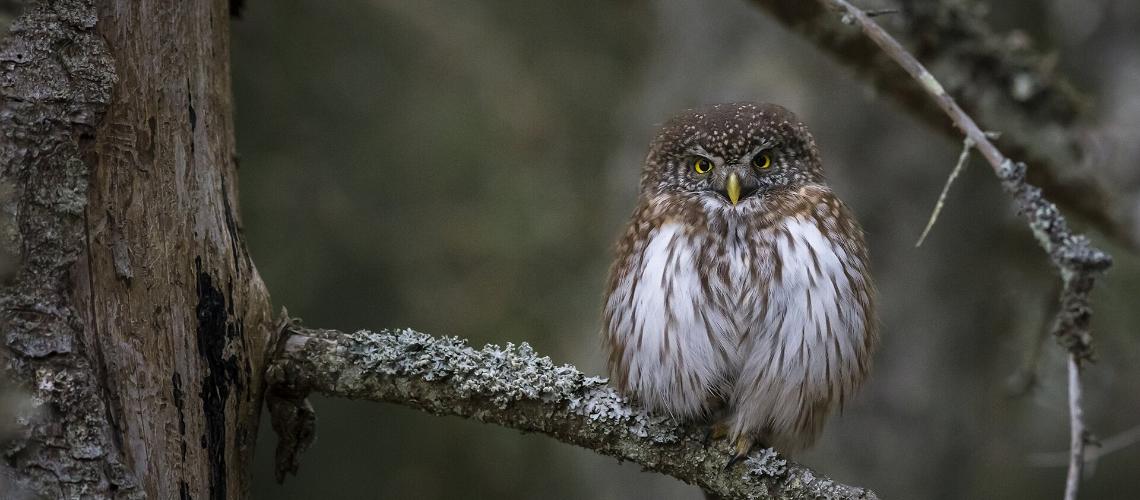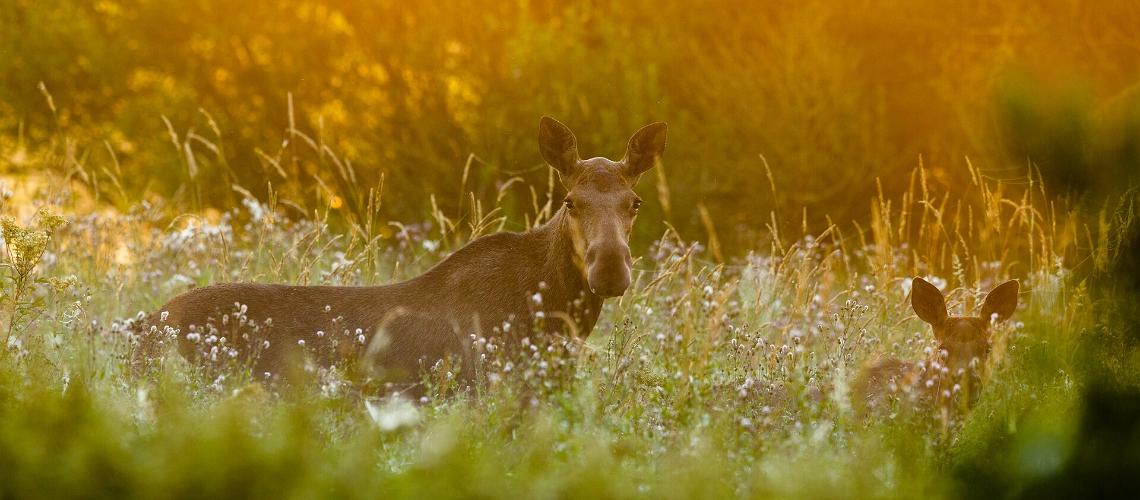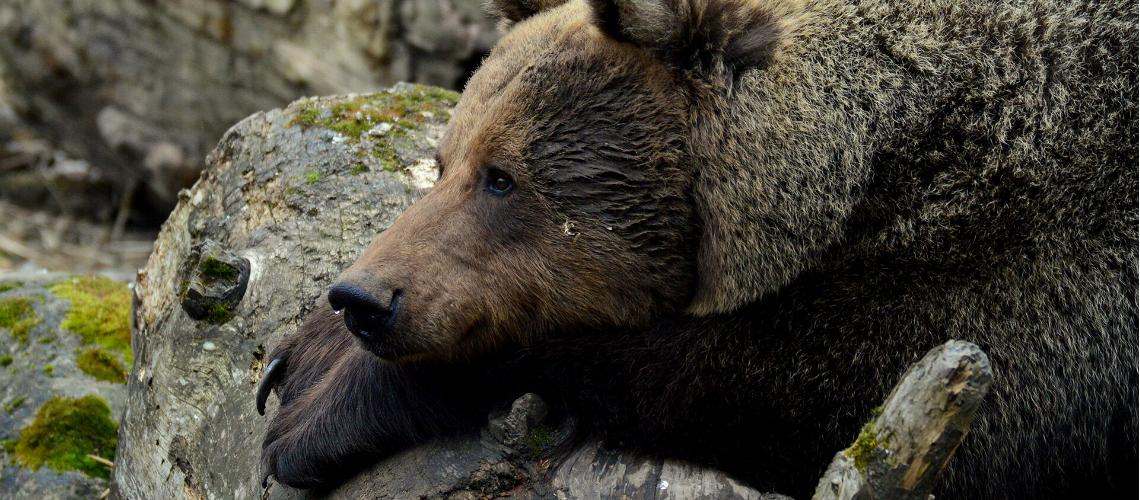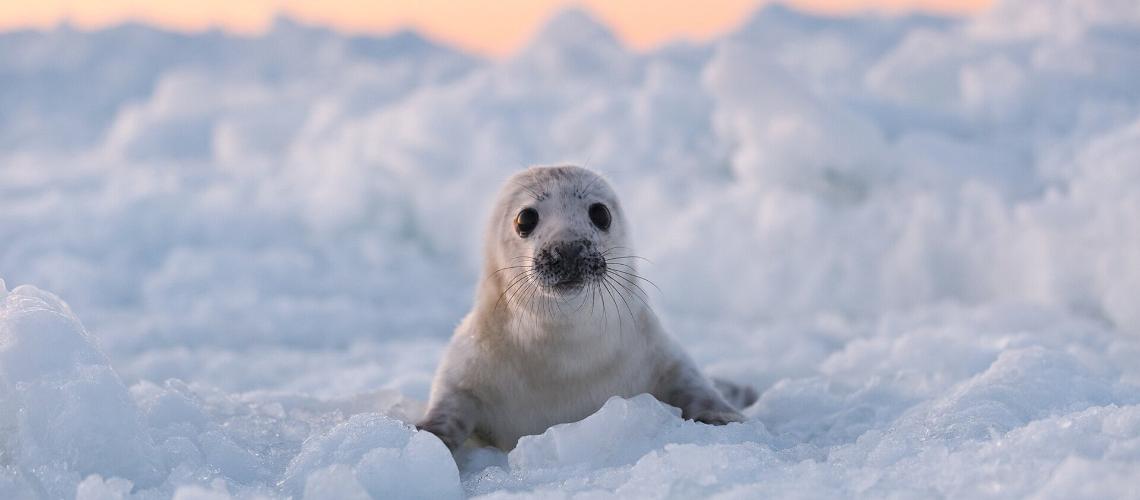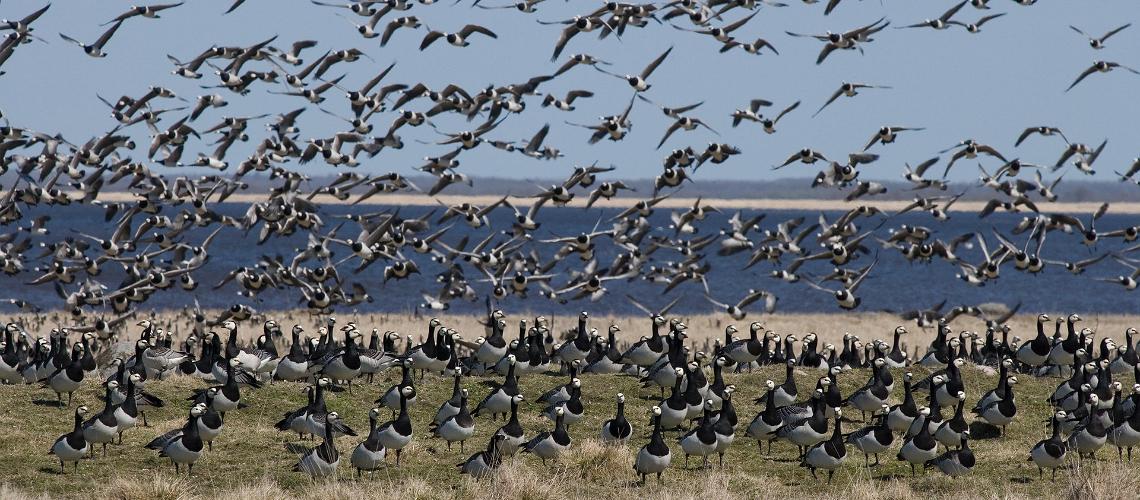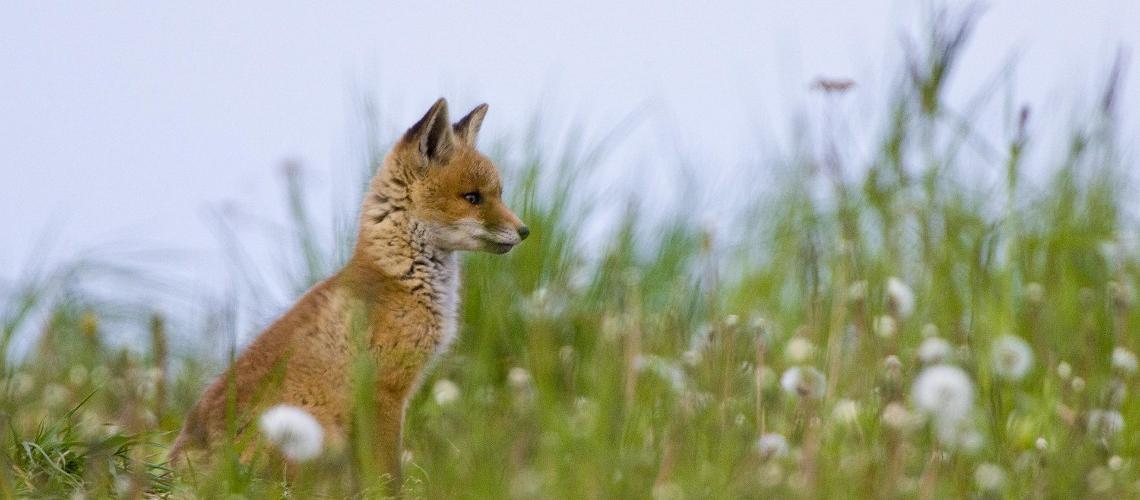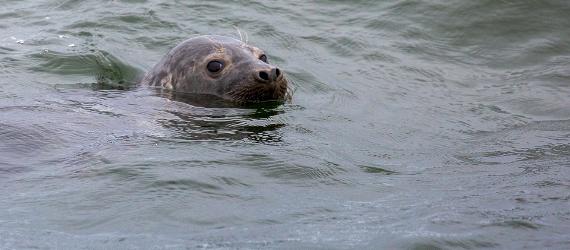Estonian landscape is as diverse and wild as the birds and animals that call it home. As one of the least inhabited countries in Europe that also has large forest areas, Estonia is home to European lynx, wolverines, wild boar, elk, 14 native bats and the national animal, the grey wolf. You can spot grey and striped seals, plus rare sea and wetland birds in here, together with the true king of the North, the brown bear.
Estonia is a wild treat for busy city dwellers looking to stretch their limbs and breathe in the world's cleanest air. As the country is small, you are never more than an hour away from an epic adventure or from a deep forest exploration. About 50% of Estonia's territory is covered in forests and there is nearly 3,800 km of coastline. You can see what we mean when we say this place is wild.
All this makes Estonia a truly inspirational place for hiking and exploring wildlife that is now less accessible or even extinct in many other European countries.
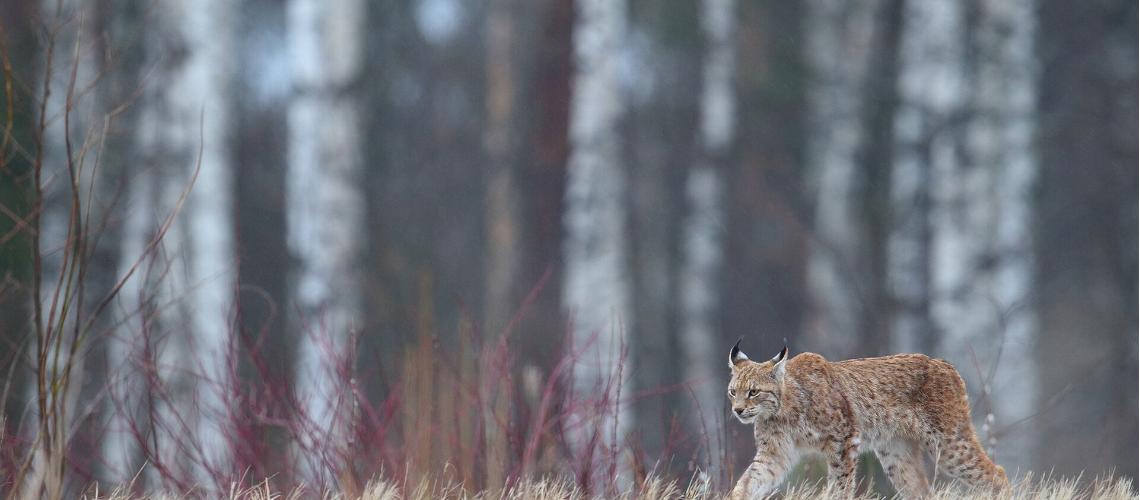
Eurasian lynx in its natural habitat
Estonia has the highest density of Eurasian lynxes in Europe.
Where to spot wild animals in Estonia
- Lahemaa National Park: located less than 80 km from the capital city Tallinn, Lahemaa National Park is the largest national park in Estonia and one of the biggest parks in Europe. The Eurasian lynx lives here, together with elk, brown bears, wolves, red deer, and other rare animals and wild creatures who thrive in forest, bog and coastal ecosystems.
- Northern Kõrvemaa Nature Reserve: one of Estonia's premier birdwatching destinations where avid birdwatchers can catch glimpses of endangered species like the black stork, the heather cock, and of the best-known bird of prey in the Northern Hemisphere, the golden eagle. In addition to birds, you can also go bear watching in Kõrvemaa.
- Matsalu National Park: another major paradise for bird lovers as the park is an important bird feeding spot on the migration route between the Arctic and Western Europe. With more than 2 million waterfowl flying over Matsalu Bay every year, you can witness up to 20,000 Eurasian cranes gather here during their annual journey, among other feathery creatures.
- Alutaguse National Park: as the majority of the park consists of vast bog areas and forested landscapes, Alutaguse is a sanctuary for wild birds and animals, with many mammals like the wolf, the Eurasian lynx and the brown bear often on the move.
- Soomaa National Park: located in the Estonian fen country, Soomaa is only accessible by kayak or canoe for a part of the year. It is a great place to see beavers as well as elk, wild boar, brown bear, grey wolf, and Eurasian lynx. Soomaa is also home to the only flying squirrel species in Europe.
If you would like to see species that roam the Estonian forests and shores but can't be physically present during a certain season, you can check out the live stream nature cameras that are usually active from February to September. The cameras provide you with a closer look without disturbing the animals.
Animal relationships
Estonian mythology and folk stories are often centered around animal characters who provide other creatures with valuable advice or play a trick on them. It would not be a stretch to say that nature and animals are deeply present in many aspects of everyday Estonian life, from language use and passport design to the fierce debates in society over which animal would deserve the national animal title the most.
In general, wild animals in Estonia aren't dangerous, except for bears in spring when they protect their offspring. Although wolves used to sometimes attack and eat humans 140 years ago, this behaviour is now in the past and you definitely should not be afraid of being eaten by a wolf in an Estonian forest. The forests provide them with plenty of food and they know how to stay clear of our species, in turn.
Every year, Estonia chooses the animal, tree and bird of the year. For 2022, the titles were awarded to the following species: the brown bear, the rowan tree and the Eurasian Woodcock.
Five seasons of wildlife spotting
SPRING. In spring, western Estonia becomes a popular birdwatching destination, attracting curious binocular-equipped visitors from around the world. Estonia is among the top three European bird watching destinations for the number of species spotted and the season can begin already in March. It usually culminates with a spring migration in mid-May and winds down by mid-June.
THE FIFTH SEASON. That's true, Estonia is the only place in Northern Europe with a unique fifth season: every year, early spring floods arrive in Soomaa, rendering up to 17,500 hectares of roads, lower forests, and meadows only navigable by water. The high water does not only transform the country's karst landscapes but also the landscapes of human homes. Canoes are needed to get to your house and the locals know how to use them. The fifth season is not made special by particular species but by the opportunity to experience the entire landscape in its wild and changing form.
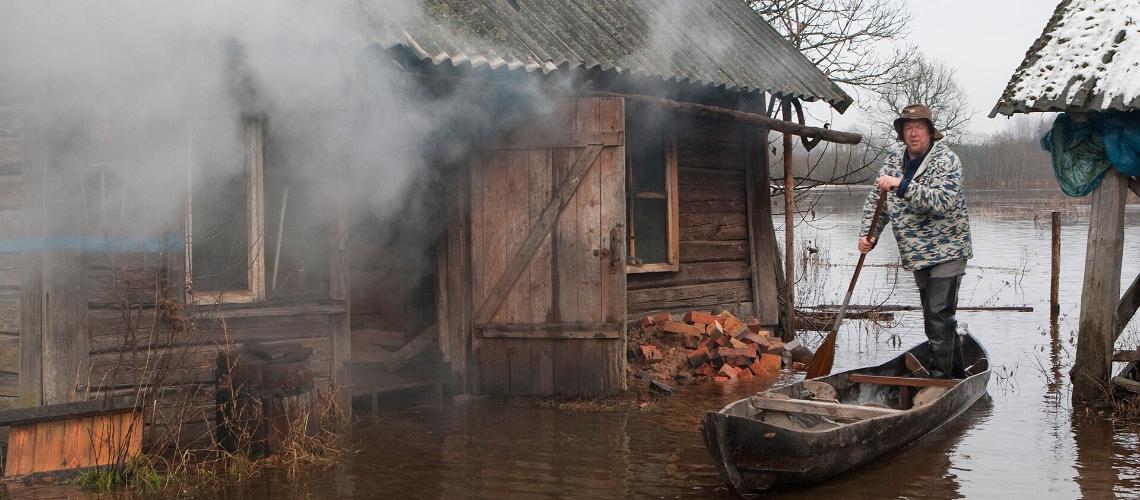
Soomaa during the fifth season
Locals use dugout boats to get around during the fifth season but as a visitor, you can always rent a canoe and glide under the trees and across flood plains in an otherworldly landscape.
Photo by: Mati KoseSUMMER. Summer transforms the winter wonderland into a lush summer paradise with white nights. These are the perfect months for hiking, camping, canoeing, kayaking, swimming, and seal watching.
AUTUMN. Berry picking in bogs and bear spotting tours are what autumns are all about. Taking in the autumn colours also gives you the time to smell the unique marsh plants. Bogs are the oldest organic landscapes of Estonia, with some of them reaching up to 10,000 years of age. The best time for bear watching in autumn is from mid-August to the end of October.
WINTER. Winter's snow carpets provide an ideal setting for animal tracking, rendering the wildlife that lives in Estonia's forests far more noticeable. Even when viewed from a distance, the majestic moose is a sight to behold against the white backdrop of the frosty season.
Estonia has one of the highest densities of large predators in Europe, including brown bears, lynxes and wolves. There are around 700 brown bears on the Estonian territory, so if you are attentive you might find traces and footprints in the forest. If you're extremely lucky, you may even meet one of them! If you want to try a different type of luck, you are welcome to join a group of bear trackers and spend a night in a bear watching hide.
Now, that's wild!















